The solar sail is one of those technologies that will eventually help us reach the stars. At the same time, while accelerating a space vehicle by this method energy seems to be taken from nowhere… or at least you don’t need to spend such an incredible amount of propellant to obtain it, as in rocket engines. This method can only be used to accelerate relatively small space vehicles, and it is not always possible to fly where you want.
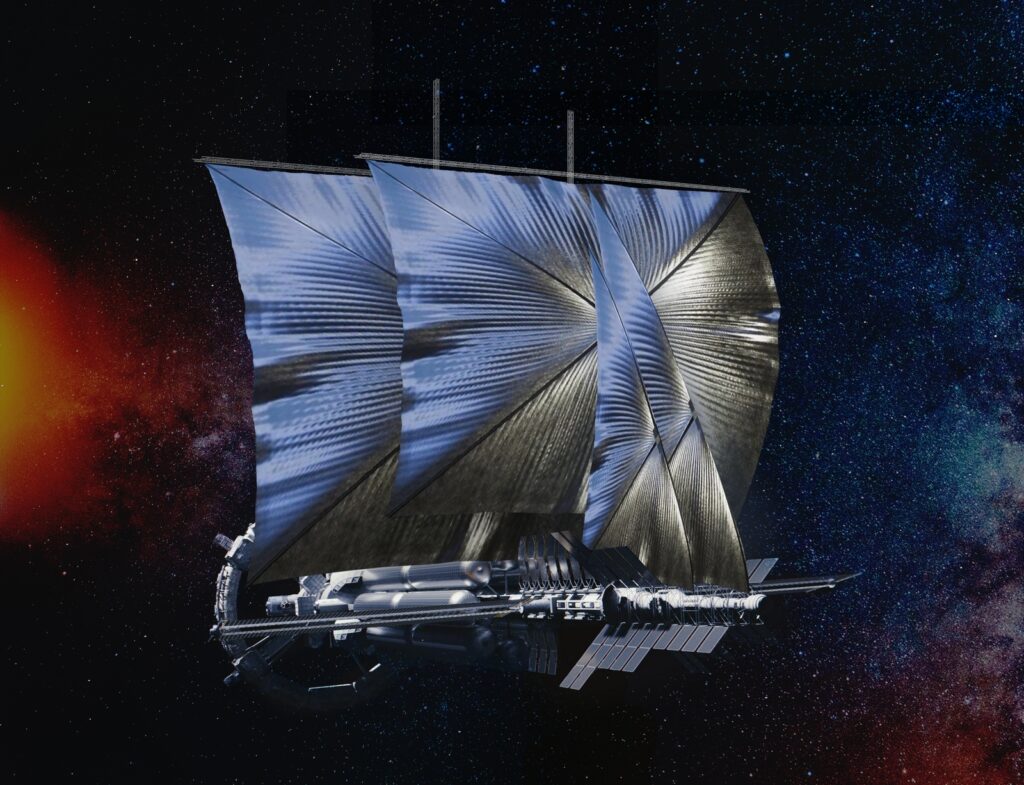
About the momentum conservation law once again
The principal trend in development of rocket engines in the space industry from the very first chemical ones to quite futuristic so far thermonuclear ones involves a change in the force that causes gases to flow out of the nozzle and a constant increase in specific impulse.
At the same time, engineers strive to maintain a sufficiently high specific power indicator, but the principle of ship acceleration does not change. We need to eject a certain mass every second, creating an impulse that pushes the ship in the opposite direction.
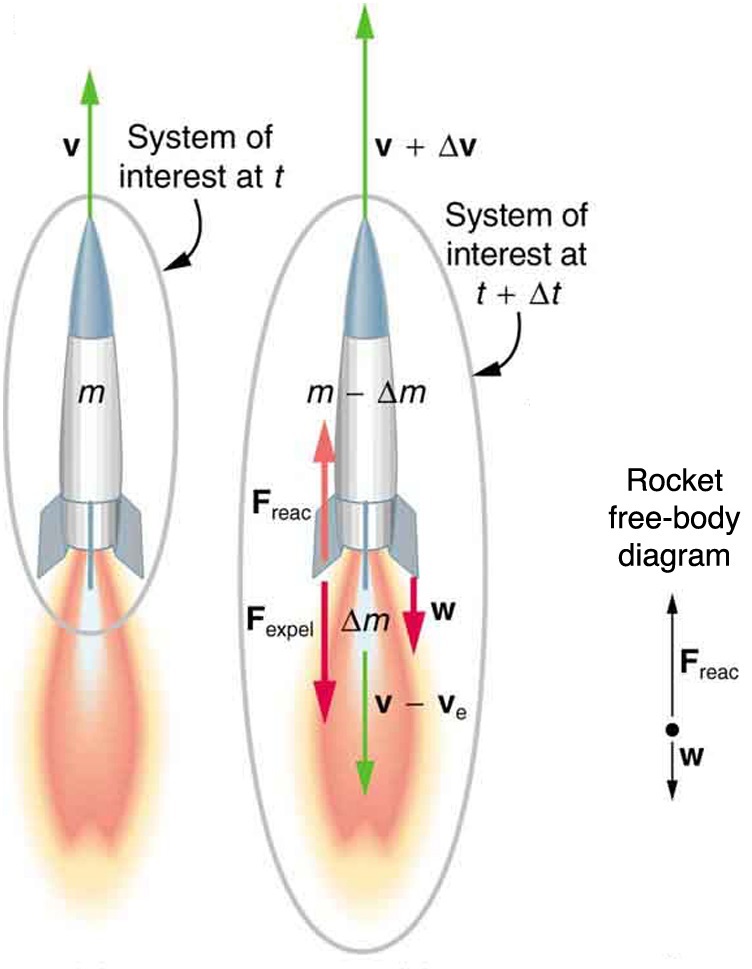
An increase in the specific impulse of the engine allows you to accelerate the ship, spending less working fluid per unit change in the velocity vector. But no matter how efficient the engine is, it still consumes the working fluid very quickly, and even with a specific impulse that is close to the speed of light, in just a few months of constant acceleration, the mass of the working body that will be used equals the mass of the rest of the ship’s structures. The question arises whether the impulse for acceleration may be obtained from some other source. And there is such a source in space — electromagnetic radiation, which also includes visible light.
Lebedev’s experiment
In order to understand how effective it is to use light as a force to propel a spacecraft, it is necessary to go more than a hundred years back to a time when there was still a debate about whether light was a particle or a wave. We now know that because of its quantum nature it is both, but at the turn of the nineteenth and twentieth centuries scientists were still setting up experiments that would support one of the two points of view.
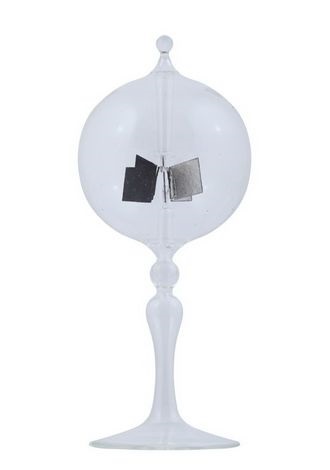
One of the experiments supposed to confirm that light consists of particles having their own force and momentum was conducted in 1899. Pyotr Lebedev built an experimental device consisting of a very light rod suspended by a glass thread in a vacuum flask. Two very light round plates were attached to it on both sides: one was black, the other one — mirror-like. The scientist experimented a lot, trying to pump absolutely all the air out of the bulb and illuminating the plates as evenly as possible.
As a result, in conditions of a very deep vacuum and with uniform illumination, the rod began to rotate. This indicated that the light acts on the plates and its effect (usually called pressure, although it is not at all the same as gas pressure) on the mirror plate is stronger than on the black one.
This happened due to the fact that the black plate absorbs all photons, while the mirror one reflects them. At the same time, it would be incorrect to say that the first one does not receive an impulse from light. It’s just that this impulse is twice as small as that of a mirror plate.
What is a solar sail?
Even before Lebedev’s experiments some scientists suspected that the impulse of electromagnetic radiation can play a significant role in space traveling. Even Johann Kepler, in his letter to Galileo in 1610, hinted at an analogy between sunlight and wind in the Earth’s atmosphere. But until the beginning of the 20th century and the practical measurement of the force of light pressure, no one had idea about the origins and workability of this force.
The problem is that this force is extremely weak. At a distance of one astronomical unit, the amount of energy coming from the Sun is 1361 Watt/m2. And the force affecting one square meter of the mirror surface is only 9.08 micronewtons. That is, it is approximately 1,100,000 times less than the force of gravity on the Earth’s surface, and at first glance it seems that its practical application is impossible.
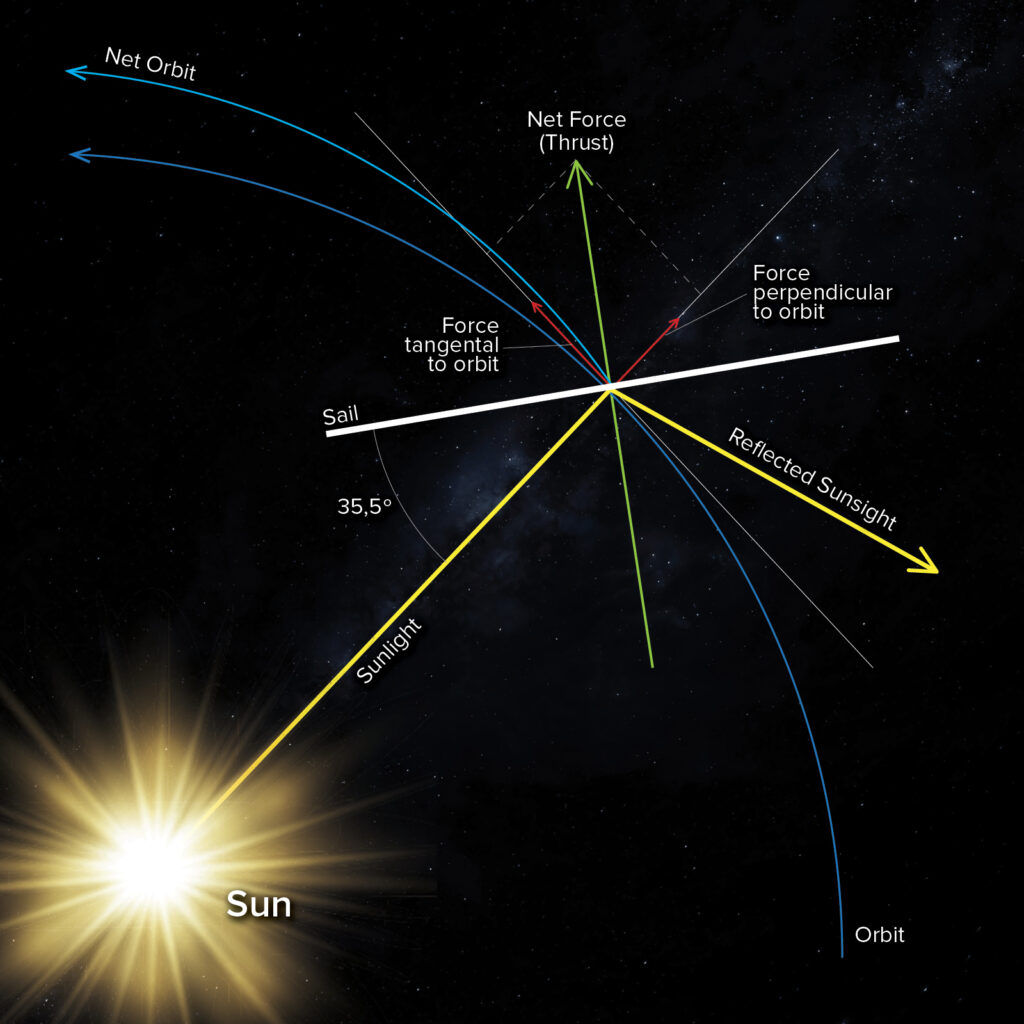
However, as early as 1908, Svante Arrhenius suggested that the pressure of light in the cosmic vacuum could give acceleration to such tiny and light objects as spores of microorganisms and thus contribute to the spread of life between stars. As for the use of sunlight to propel macroscopic objects in space, the technical solution to this issue was first proposed by Konstantin Tsiolkovsky, and then by Friedrich Zander. Let the impulse that a square meter of the mirror receives from sunlight be very small. You just need to make the mirror itself very light, and at the same time large.
In this case, the absence of substance in space becomes a positive factor, for it doesn’t prevent acceleration unlike it happens on Earth. It is enough to roll out a very thin mirror film with an area measured in hundreds, thousands and hundreds of thousands of square kilometers and the total momentum that the surface as a whole will receive from sunlight in total will no longer be micro-, but milli-, or even just newtons. This design was called a solar sail.
Solar sail in the twentieth century
In the 1920s, when the concept of solar sails appeared, engineers were skeptical. Such a sail is absolutely not practical for launching any load from the Earth. And the principle engineers’ task was putting the spacecraft into orbit. And much simpler chemical rockets coped much better with this task. Therefore, until the end of the 60s, the idea was mostly mentioned by science fiction writers.

However, at the beginning of the 1960s, it became clear that the task of launching devices into orbit was solved. But for achieving high speeds in deep space, chemical rockets were not suitable, because they were too expensive. Plasma and nuclear engines were just concepts far from implementation. So engineers faced again to the concept of a solar sail. One of its most consistent popularizers was Carl Sagan.
What made the engineers so interested in those few tens of millinewtons that can be created by a giant structure of a sail with an area of hundreds of square meters? It is the fact that the ship gets a tiny acceleration from these sails all the time and at the same time does not have to expend any propellant at all. This allows the solar sail craft to accelerate for months and years, gaining higher and higher speeds. 1 millimeter per second per second may sound like a ridiculous acceleration. But every minute the speed of such a ship will increase by 6 centimeters per second. In an hour, this will be an increase of 3.6 meters per second, and in a day of flight, the speed will increase by 86.4 meters per second. During six months of continuous acceleration providing constant illumination, the ship with a solar sail is able to gain an additional 15.5 kilometers per second of speed, which is already compared to the maximum speed developed by a man-made spacecraft so far.
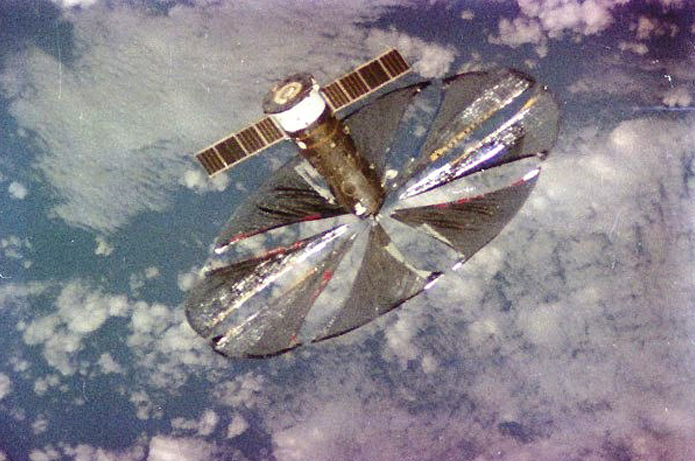
The concept of a solar sail seemed so trivial in the 1970s that their advent was expected literally tomorrow. In 1976, NASA was already developing a space probe with such a sail, which was supposed to go into space in the early 1980s to approach the Halley’s Comet. But in the end, the project was abandoned.
In 1992, there were bombastic plans to hold an international solar sailing regatta to mark the 500th anniversary of Christopher Columbus’ voyage to America, but they did not put their money where their mouths were. Actually, one of the devices — the Russian Znamya-2 — did reach orbit in 1993, but it was used not to obtain thrust from light, but as an experiment on illuminating the Earth’s surface with an orbital mirror. And even this experiment ended in nothing.
By the end of the 20th century, no solar sail had been deployed in space. Many automatic probes, starting with Mariner-10, did use the mechanical effect of sunlight on their solar panels to change their orientation, but this method was never applied to propel a ship.
The first solar sails in space
On June 21, 2005, the history of space travel could change forever. On this day, a rocket with a prototype of a space vehicle with a solar sail Cosmos-1 was launched into orbit from a Russian submarine in the Barents Sea. Its main developer was the Planetary Society, an American non-profit organization founded by Carl Sagan. But the rocket never reached orbit and the device fell into the ocean.
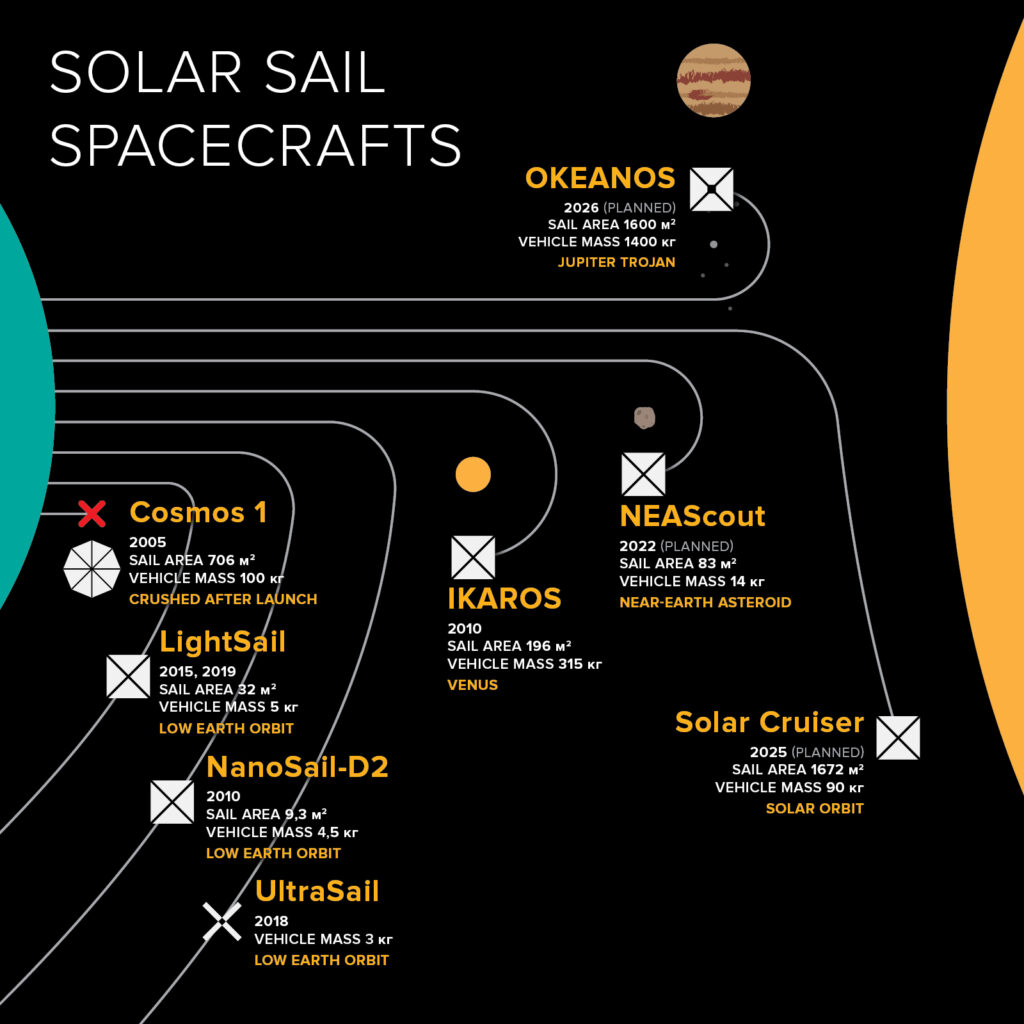
But the next attempt turned out to be more successful. In 2010, the Japan Aerospace Exploration Agency (JAXA) launched the IKAROS probe into space. This device weighing 315 kilograms was equipped with a solar sail in the form of a square with a side of 14 meters. The thin-film solar batteries were placed on the surface of the sail to power the devices onboard. Using its solar sail, IKAROS was able not only to gain an additional speed of 400 meters per second, but also to steer by adjusting the angle of incidence of the rays on the sail.
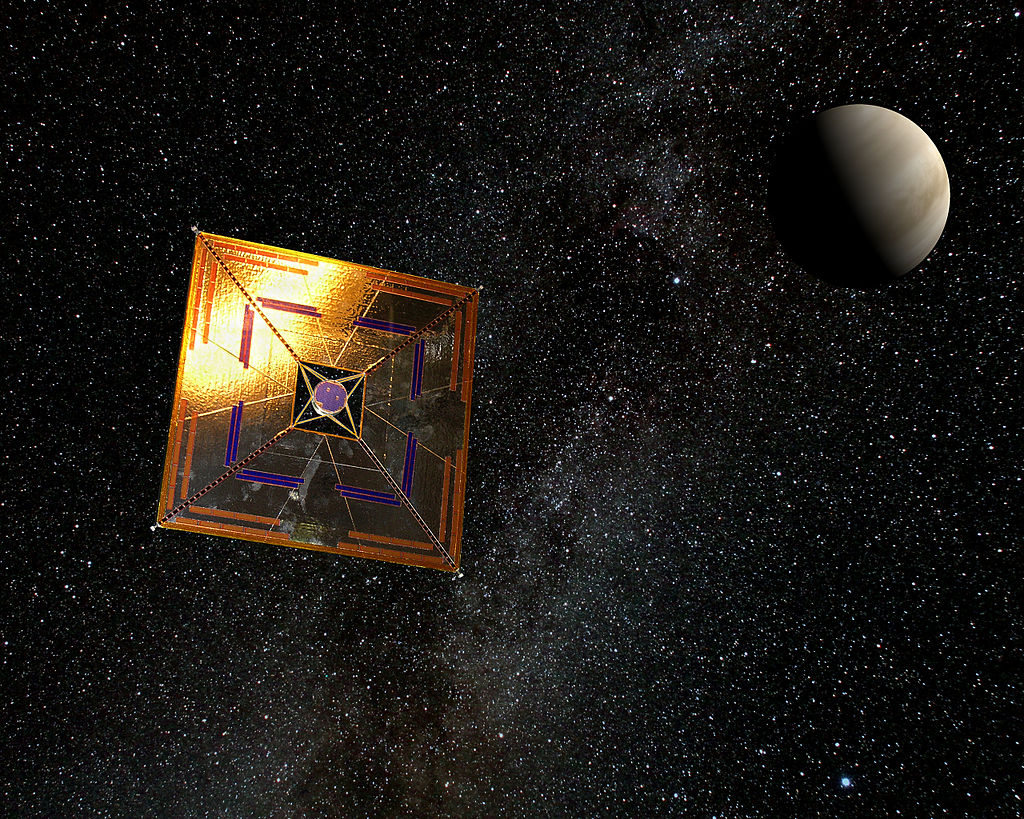
In the same year 2010, another device using a mirror surface to create acceleration was launched into space. It was NanoSail-D2 — a very small probe weighing only 10 kilograms. It had a square sail very similar to the IKAROS’, although only 10 square meters in area. Thanks to it, the device was able to successfully change its orbit. It operated for nine months, after which it fell into the ocean.
In 2015, after long delays, the successor to Cosmos-1 was launched — LightSail-1. Like the NanoSail-D2, this device had the dimensions of the main unit 30x10x10 centimeters, but its sail was much larger and had an area of 32 square meters. The mission cannot be considered completely successful, since communication with the device was extremely instable, but the mirror film was fully deployed and it was even used to correct the trajectory of the apparatus.
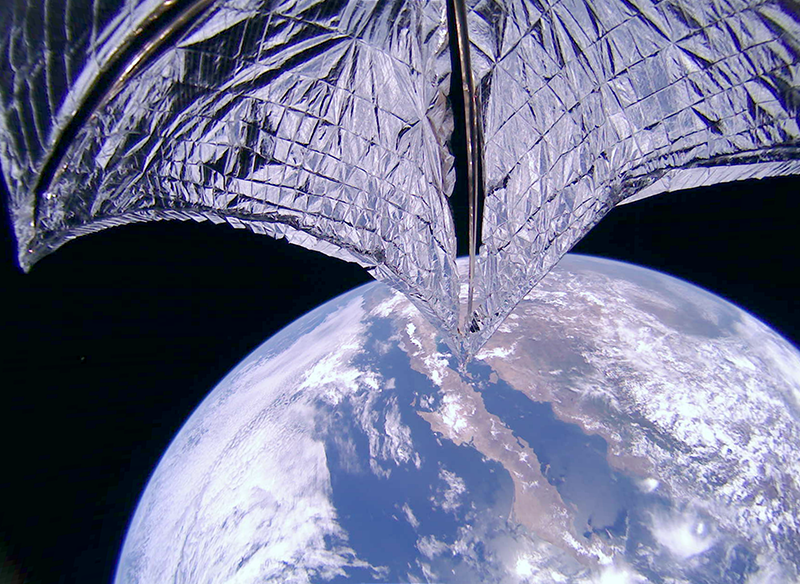
The launch of LightSail-2 was much more successful. This device was created by the same Planetary Society and was structurally similar to the previous one. This time the flight of the device lasted for about a year and was completely successful. For example, in just one week, LightSail 2 was able to raise the height of its orbit by 1.7 kilometers using nothing but the sail. However, the Planetary Society’s vehicles, unlike IKAROS, could not change the angle of their sail relative to the Sun and maneuver as effectively.
Future missions
Advances of the 2010s boosted the interest in using solar sails for research missions. Several of them are being developed right now. The first such mission is the Near-Earth Asteroid Scout (NEAScout), which was planned to be launched as part of the Artemis I mission. The core of this device consists of six cubesats complex weighting 14 kilograms. It is equipped with a rectangular sail, similar to the IKAROS and NanoSail-D2 sails, but with a surface area of 85 square meters.
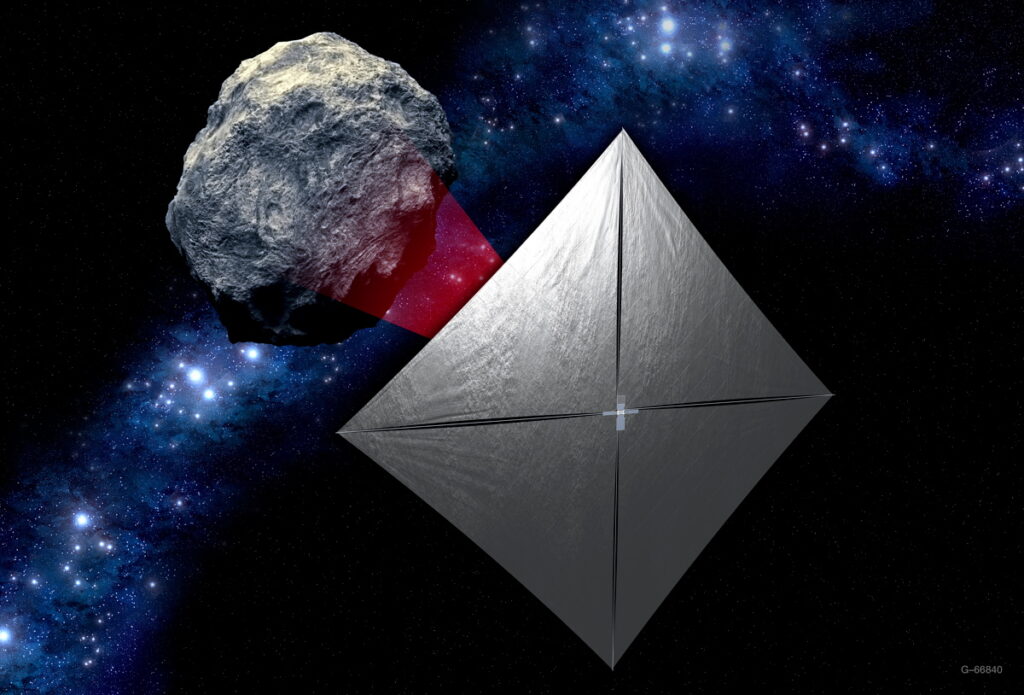
This device is supposed to make several flybys of the Moon, after which it will go to 1991 VG. It is a small near-Earth asteroid that occasionally approaches the Earth at a distance of less than 800,000 kilometers. NEAScout will be able to take a detailed look at the surface of this asteroid using a high-resolution camera and transmit these images to scientists.
An even more ambitious project is the Oversize Kite-craft for Exploration and Astronautics in the Outer Solar system, aka OKEANOS. This is a Japanese device, scheduled to launch in 2026. The OKEANOS will use of a hybrid thrustor, which consists of a square solar sail with a side of 40 meters, equipped with film solar cells, and an ion engine.
The weight of the device is 1,400 kilograms and it is essentially a combination of two successful JAXA projects — IKAROS and Hayabusa. The goal of his mission is one of Jupiter’s “Trojans”. The device will approach it, enter its orbit, land a small robot on its surface, analyze samples on the spot and, perhaps, will able to fetch them to Earth by 2050.
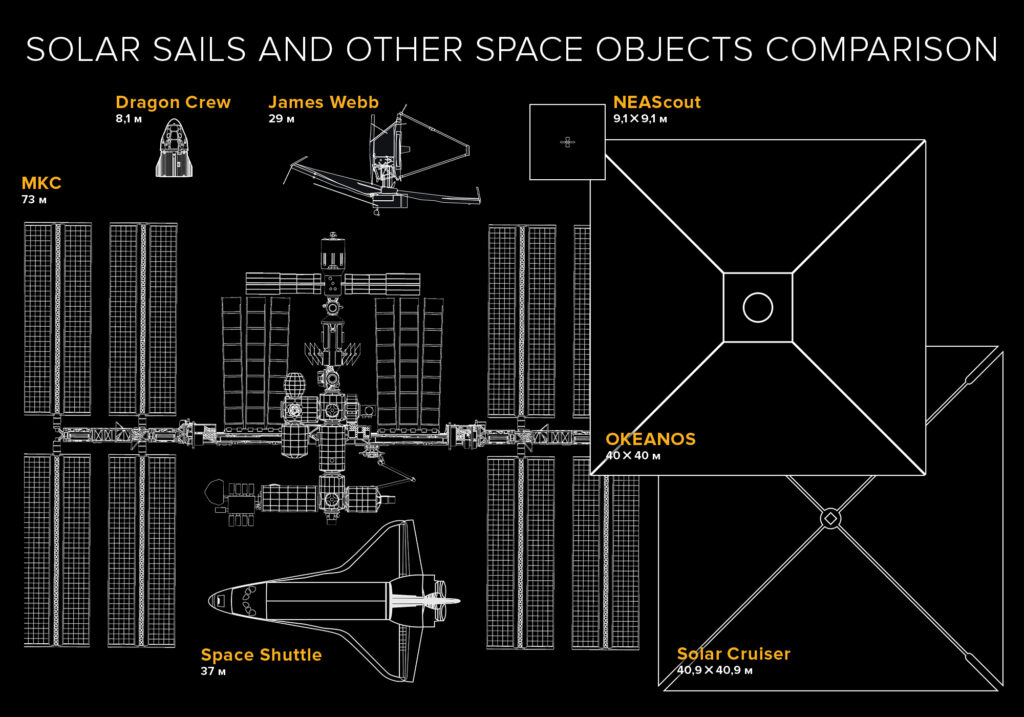
And in 2025, the Solar Cruiser device designed to study the particles of the solar wind and their interaction with the atmospheres of the planets should be launched into space. It is planned that this craft, equipped with the largest man-made solar sails with an area of 1,672 square meters, will enter a polar orbit around the Sun and will be able to study its poles.
Shape and material of sails
One of the interesting features of solar sails is their shape. Currently, three main forms of sail are considered: square, heliogyro and disk. Of all these shapes, the square one is mostly used in space today. As for the heliogyro, this design consists of four narrow “blades” or ribbons, each of which has a width of only a few tens of centimeters, but its length is measured in hundreds of meters. As a rule, the blades are stabilized by rotating the device around its own axis. Such a kind of space carousel.
Theoretically, this form of sail is considered the most promising. First of all, a narrow long tape, the area of which is hundreds of square meters, can be easily packed into one roll and when unfolded, you don’t have to worry that it will unfold incorrectly or won’t unfold all the way.
Second, the blades of the heliogyro can be rotated quite easily around their long axis, thereby adjusting the momentum they receive from sunlight. And since each of them rotates separately, turning some of them can effectively change the motion vector that the spacecraft receives from sunlight.

In practice, a spacecraft with a solar sail of the heliogyro type has already been launched. It happened on December 16, 2018. The UltraSail apparatus consisted of two cubesats with a single ribbon stretched between them (7.7 centimeters wide and 260 meters long). The device was put into orbit, but it was never possible to establish communication with it, so it is not known whether it managed to unfold the tape properly.
Despite this, new devices using solar sail of the heliogyro type are being developed. We may mention I-Sail, for example, which was planned to be launched in 2022, but there has been no news about the project for a long time.
The apparatus was supposed to have a mass of 25 kilograms, and the sail consisting of two ribbons that unfold in two directions from the apparatus producing a total area of 2,500 square meters.
Thus, of all solar sail designs, square sails are the most successfully used in practice today.
For a long time, metal foil was offered as a material for sails. Indeed, many metals can be rolled into a flat sheet whose thickness is only tens of microns.
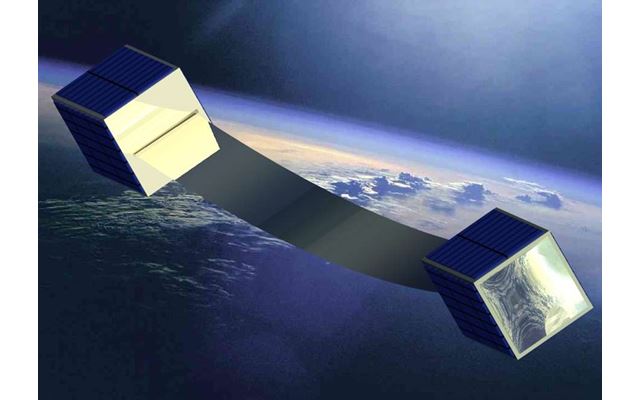
But since the 1920s, when this concept was first proposed, chemistry has taken a huge step forward and a bunch of synthetic materials have appeared, fit to produce very thin films, and the coefficient of structural quality (that is, the ratio of strength indicators to mass) of such films will be higher than that of metal foil. So, in practice, no metal foil solar sail has ever been deployed in orbit. Instead, materials based on polyester or polypropylene are used.
What are the prospects of solar sails?
And yet, how effective is the solar sail concept? When it comes to flight, which in any case must take years and decades, nothing can match the efficiency of a solar sail. There is simply no better idea for cargo ships bound for the outer planets of the solar system or interstellar probes than slow passive acceleration by solar sails.
But there are three big downsides about this concept. The first is that the ship had to be not only accelerated in space, but slowed down near the target as well. In the case of interstellar flight, the light-emitting stars are at both ends of the journey, so everything is relatively simple. The probe is accelerated by the light of one star, then it is slowed down by the light of the other. With the planets, not everything is so simple, because the amount of light reflected by them is quite small and it is clearly not enough for full braking of the apparatus.
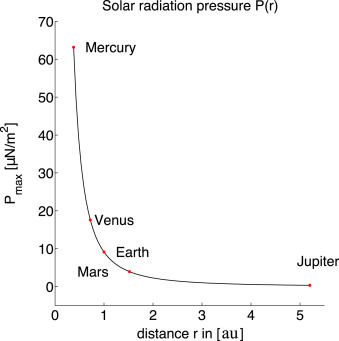
Fortunately, orbital mechanics at speeds measured in tens of kilometers per second implies flight not in a straight line, but along a certain curved trajectory, that is, on the last part of the flight, one can hope, if not for the “solar wind on the bow”, then at least for the “solar wind on the beam” or ” sunny backstay”.
“Backstay”, “wind on the beam”, “wind on the bow” and with them also “headwind” — these are the terms of old time sailing navy, which should be learned by everyone who wants to use the “solar sail” as an engine in space. They indicate, respectively, the situation when the angle between the direction from which the wind blows and the ship’s course is from 168 to 90 degrees, from 90 to 78 degrees, from 78 to 11 degrees and less than 12 degrees, respectively.
It is not difficult to guess that neither a sailing ship nor a probe with a space sail can accelerate in the “headwind” position. There is also a “stern wind ” position, this is, as you can guess, a situation when the above-mentioned angle is from 168 to 180 degrees, but here everything is clear: the wind blows where we need it.
Secondly, the farther the sail is from the Sun, the lower the intensity of the light falling on it. At the same time, this intensity decreases in proportion to the square of the distance to the light. That is, at a distance of two astronomical units from the Sun, the impulse that the solar sail will receive every second will be less than what it receives in the Earth’s orbit by not two, but by four times.
But it also works in the opposite direction. The closer the sail is to our star, the more momentum it gets. For example, at a distance of 37 million kilometers, that is, a little closer to the Sun than Mercury, it will already be 16 times higher than in Earth’s orbit, and at a distance of 9 million kilometers, which is compared with the distance of the Parker probe to the Sun, it will increase by 256 times .
This leads to an interesting solution. In order to fly away from the Sun at high speed, a ship with a solar sail can first approach it, open the sail and start intensively gaining speed.

Third, in order to effectively accelerate cargo whose mass is measured in tons, the area of the sails must be measured in hectares. There are even projects of solar sails for interstellar travel, whose area is measured in square kilometers. Of course, such projects are not quite realistic as for now, but the suitability of solar sails for accelerating large loads is indicated by the following figures obtained from calculations.
It is estimated that a square solar sail with a side of 800 meters will be able to deliver a cargo weighing 9 tons from Earth to Mercury in 600 days, and a cargo of 19 tons in 900 days. This very sail will be able to deliver one ton of cargo to Venus in 200 days or 5 tons in 270 days. A trip to Mars with such a sail would take 400 days for a 2-ton cargo or 500 days for a five-ton one.
Calculations have also been made for the outer planets. If the sail can provide the cargo with an acceleration of only 1 millimeter per second per second, then this cargo will reach Jupiter in 2 years, Saturn — in 3.3, Uranus — in 5.8, and Neptune — in 8.5 years. Thus, a solar sail is a slow but extremely cheap way to get a relatively small load somewhere. And it is quite possible that in the future such sailboats will form the basis of cargo transportation in the Solar System.
You can learn more about outer space by taking a look at our Space Knowledge section.

